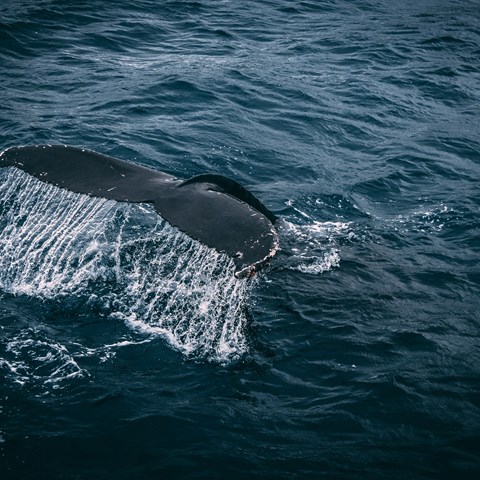The recently reached agreement by delegates of the Intergovernmental Conference on Marine Biodiversity of Areas Beyond National Jurisdiction (BBNJ), is the culmination of UN-facilitated talks that began in 2004. The purpose is to ensure the conservation and sustainable use of marine biological diversity of areas beyond national jurisdiction. One of the key questions has been how to allocate expected benefits from the use of so called marine genetic resources, biological material from plants and animals in the oceans that could have benefits for society, such as pharmaceuticals and food.
The agreement concerns the oceans, which no country owns or controls and which cover 45% of the earth's surface. The deep sea also encompasses 98% of the biosphere, that is, the part of the earth that supports life.
When SLU Global asks Niklas Kebbon, Sweden's chief negotiator and EU’s representative at the UN negotiations, to comment on the agreement, he says:
– One of the aims of the agreement is to ensure a more equitable access to and distribution of benefits arising from the use of marine genetic resources. It provides for capacity building and transfer of marine technology to developing countries and sets up a special fund for that purpose. It envisages the establishment of a scheme for sharing benefits of the utilisation of marine genetic resources if and when commercialisation occurs.
– Agreement has been elusive, particularly as regards access to and sharing of benefits of marine genetic resources without placing undue burdens on marine scientific research. The fact that the considerable expectations gap that has plagued the negotiations for so long could be bridged is a diplomatic achievement and a welcome ray of light in an otherwise polarised global arena, Niklas Kebbon continues.
Marine nature reserves
The historic treaty is crucial for enforcing the 30x30 pledge made by countries at the UN biodiversity conference in December 2022 (COP15), to protect a third of the sea (and land) by 2030. It would mean that 30% of international waters would be protected by 2030. Currently, that figure is around 1%. This would imply, for example, to establish no-fishing zones and to limit shipping routes and exploration activities, like deep-sea mining.
Ocean ecosystems produce half the oxygen we breathe, and soak up carbon dioxide, as the world’s largest carbon sink. Yet until now, fragmented and loosely enforced rules governing the high seas have rendered this area more susceptible than coastal waters to exploitation.
– This is wonderful news that we finally have an important agreement in place avoiding the tragedy of commons in the high seas. The challenge will be to designate areas of protection in the right places and in an inclusive way. Also to restrict fishing in certain areas, although this is not explicitly mentioned in the agreement. Protected areas need to be established where they provide the most benefits to nature and humans and be based on sound science. Excluding fishing is needed in order to secure viable stocks and habitats for future generations. The new agreement will hopefully facilitate this process, says Charlotte Berkström, Researcher at the Department of Aquatic Resources; Marine conservation and planning at SLU.
What will happen next?, we finally ask Niklas Kebbon.
– The text of the agreement will now be translated to the official UN languages and subjected to formal scrutiny by jurists-linguists in view of its formal adoption later this year. It will then be opened for signature and will enter into force once ratified by 60 states. The Conference of the Parties can then start meeting, establish the institutions and mechanisms foreseen in the agreement and start designating marine protected areas, Niklas concludes.
